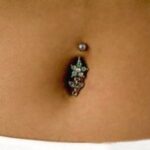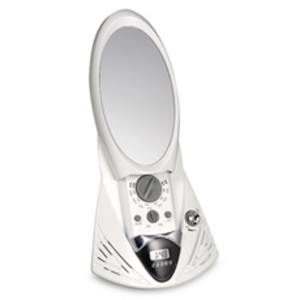1. What is a Navel Piercing?
• Navel Piercings, also known as belly button piercings, can be somewhat misleading. While the actual belly button is not pierced, the flesh just above it is, with a curved barbell.
2. Are There Other Ways To Pierce the Navel?
• There are indeed other locations around the navel that can be pierced. The most common is the one on the rim just above the actual belly button, however, people have also been known to have the lower rim pierced, or even either side of the upper or lower rim, or the rim on either side of the belly button (left and/or right). Some people go as far as to pierce all four locations, north, south, east, and west of the navel.
3. Is it Possible to Die from a Navel Piercing?
• Over time, the navel piercing has acquired a rather impressive and horrifying reputation. The most common stories heard about the navel piercing is that they can become infected incredibly easily and that the infection can travel into the blood stream and throughout the body causing death in just a single hour.
• On the contrary, however, while navel piercings (like any other piercing) can get infected, there have been no known or documented cases of death because of one.
4. How Long Does it Take to Heal?
• The navel often requires a longer healing time than most piercings. While some may heal in a matter of 6 weeks or so, most take about 6 months to completely heal.
5. When Can I Change my Jewelry?
• When you can change your original jewelry depends on what kind of jewelry you wish to put in. Other barbells or rings can most likely be changed after 6 weeks, but heavier pieces such as those that dangle usually require much more time. Anything that is heavy or large should be put in only after the piercing is completely healed, because the extra weight and length can cause irritation to the piercing.
• Navel piercings tend to get caught on clothing and other things (closing doors if you’re too close-OUCH!). Especially during the hours when you are asleep. This causes unpleasant tug and pull.
6. I Changed my Jewelry too Soon. It Hurts. What do I do?
• The easiest way to tell whether or not you changed your jewelry too soon is from the pain. You may feel an uncomfortable weight pulling down on it. It may hurt to move in certain ways. It may keep you up at night or force you to sleep only on your back. It may be constantly getting caught on your clothing or other things and pulling on the flesh. It may hurt to clean it, causing a lot of crust build up.
• If any of this is occurring, don’t try to change the piercing on your own. Go back to your piercer ASAP and ask him/her to change it back to the original jewelry. You should start feeling better immediately.
7. How do I Care for my Navel Piercing?
• Like any other piercing, the best way to care for the navel is to use a sea salt solution. While you can purchase said solution in stores, online, or at your local piercing parlor, you can also mix your own in much larger quantities (if desired) for much less than it would cost to buy a pre-mixed solution. The recipe is very easy, and can be found here at the link in the references.
8. I Think my Navel is Infected. What do I do?
• The first thing you want to do is go to your piercer and have him/her take a look at it. They should be able to tell you if it is in fact infected. If so, follow their instructions and visit your doctor immediately. If they say it isn’t infected and you’re still worried, visit your doctor immediately.
Have more questions? Shoot me a message. I’ll be more than happy to help you out or direct you to someone who can.




